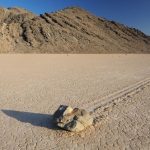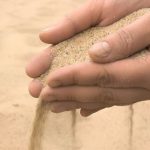 Technology
Technology  Technology
Technology  Humans
Humans 10 Everyday Human Behaviors That Are Actually Survival Instincts
 Animals
Animals 10 Animals That Humiliated and Harmed Historical Leaders
 History
History 10 Most Influential Protests in Modern History
 Creepy
Creepy 10 More Representations of Death from Myth, Legend, and Folktale
 Technology
Technology 10 Scientific Breakthroughs of 2025 That’ll Change Everything
 Our World
Our World 10 Ways Icelandic Culture Makes Other Countries Look Boring
 Misconceptions
Misconceptions 10 Common Misconceptions About the Victorian Era
 Mysteries
Mysteries 10 Strange Unexplained Mysteries of 2025
 Miscellaneous
Miscellaneous 10 of History’s Most Bell-Ringing Finishing Moves
 Technology
Technology Top 10 Everyday Tech Buzzwords That Hide a Darker Past
 Humans
Humans 10 Everyday Human Behaviors That Are Actually Survival Instincts
 Animals
Animals 10 Animals That Humiliated and Harmed Historical Leaders
Who's Behind Listverse?

Jamie Frater
Head Editor
Jamie founded Listverse due to an insatiable desire to share fascinating, obscure, and bizarre facts. He has been a guest speaker on numerous national radio and television stations and is a five time published author.
More About Us History
History 10 Most Influential Protests in Modern History
 Creepy
Creepy 10 More Representations of Death from Myth, Legend, and Folktale
 Technology
Technology 10 Scientific Breakthroughs of 2025 That’ll Change Everything
 Our World
Our World 10 Ways Icelandic Culture Makes Other Countries Look Boring
 Misconceptions
Misconceptions 10 Common Misconceptions About the Victorian Era
 Mysteries
Mysteries 10 Strange Unexplained Mysteries of 2025
 Miscellaneous
Miscellaneous 10 of History’s Most Bell-Ringing Finishing Moves
Planet Earth’s 10 Most Hardcore Natural Creations
In its 4.5 billion years of existence, planet Earth has given rise to astonishing species and materials that astound us with their complexity, usefulness, and adaptability. Life on Earth has taken root in the most unforgiving places: creatures thrive in boiling hydrothermal vents, plants grow at extreme altitudes, and fish swim in the most remote, isolated waters. Ancient trees once thought extinct endure, and lakes petrify animals, forming eerie monuments to nature’s extreme conditions.
This list will excite you, stun you, amaze you, and hopefully entertain you. Stand by—we’re about to explore some of the most hardcore natural creations that our spherical friend and home has produced… so far.
Related: 10 Mythical Humanoids from the Ancient World
10 The Marimo: The World’s Most Charming Algae
Marimo looks like cute balls of algae, but looks are deceiving: this is one of the world’s toughest survivors. Known scientifically as Aegagropila linnaei, marimo forms dense green spheres by rolling with the currents of lakes in the Northern Hemisphere. They grow extremely slowly and steadily, sometimes taking decades to expand just a few millimeters. In places like Lake Akan in Japan, these algae are revered as national treasures and have grown to basketball sizes, having lived for centuries.
In Iceland’s Lake Mývatn, marimo colonies once thrived until industrial pollution disrupted the lake’s delicate balance, causing algae blooms to block out sunlight. Despite these setbacks, restoration efforts have shown the resilience of these seemingly fragile organisms. The marimo’s survival strategy includes floating and sinking in sync with photosynthesis, maximizing their exposure to sunlight. This brilliant adaptation allows them to endure in harsh aquatic environments.
Marimo’s unique appeal has also made it popular around the world. Marimo is sold as aquarium pets and celebrated with annual festivals in Japan. In Japanese culture, marimo symbolizes patience, endurance, and survival against all odds. The frankly weird characteristics of marimo, combined with their cute appearance, make marimo one of Earth’s most intriguing creations.[1]
9 Olivine: Earth’s Self-Cleaning Mineral
Olivine, a green magnesium silicate mineral, is turning out to be one of planet Earth’s most powerful tools in the battle against climate change. It has a unique ability to cleanse land, air, and water by accelerating the sequestration of carbon from Earth’s atmosphere. Olivine weathers naturally, converting atmospheric CO2 into stable carbonates that remain locked within rocks for thousands of years.
In Earth’s oceans, olivine helps to capture carbon dioxide and combat ocean acidification. When olivine is introduced into the water, it reacts with CO2 to form magnesium carbonates, which sink to the ocean floor, removing carbon from circulation for thousands of years. Humanity can harness ocean waves to accelerate this natural weathering process, amplifying olivine’s carbon capture potential and helping to slow or reverse ocean acidification.
Olivine is also useful for water purification and for extracting heavy metals. In agriculture, olivine is used to enhance soil health, improve crop yields, and reduce chemical inputs into the soil. Olivine is turning out to be a multi-purpose tool in the goal of achieving a better planet Earth.[2]
8 The Sea Pen: Nature’s Living Quill
Sea pens, colonial marine animals of the order Pennatulacea, resemble antique quill pens. They anchor themselves to soft seabeds using a stalk called the peduncle, while the upper section, or rachis, bears polyps for feeding and reproduction. Sea pens thrive in waters ranging from polar seas to tropical environments, capturing small prey with their tentacles.
Sea pens glow when disturbed, a trait known as bioluminescence, which helps deter predators from eating them. They also adjust to environmental conditions by expanding or deflating through water expulsion. Some species grow up to two meters in length, sporting vibrant colors such as yellow, orange, and red, brightening the ocean depths.
Sea pen colonies are highly specialized, with different polyps responsible for feeding and reproduction. They can survive in extremely harsh conditions, and they contribute greatly to the overall health of marine ecosystems.[3]
7 The Wollemi Pine: The Dinosaur Tree
The Wollemi pine is an ancient tree species known as the “Dinosaur Tree.” It’s considered to be a living fossil, dating back 91 million years to the time when dinosaurs still roamed the earth. Long thought extinct, the Wollemi pine was rediscovered in 1994 by an off-duty park ranger in the Blue Mountains of Australia. With fewer than 90 mature trees left in the wild, conservationists have launched intensive efforts to preserve the species, growing hundreds of seedlings at secret locations to ensure their survival.
These ancient trees grow at an excruciatingly slow pace, less than a centimeter per year, and take decades to reach the rainforest canopy. Their survival is threatened not only by their slow growth but also by environmental dangers, including bushfires and a deadly pathogen called Phytophthora, which causes root rot. To protect these giants, conservationists strictly limit access to their sites to prevent the spread of disease and safeguard the population.
To secure the future of the Wollemi pine, seedlings are now distributed to botanical gardens worldwide, and they’re also sold at nurseries. This initiative discourages visitors from disturbing the wild population, and it also raises global awareness of the tree’s importance. The Wollemi pine’s survival offers a rare chance to protect one of Earth’s oldest tree species, ensuring that it survives and endures for future generations.[4]
6 The Devil’s Hole Pupfish: Living in Isolation
Devil’s Hole is a limestone cavern in Nevada, and it’s one of the most isolated and remote locations on Earth. It’s also home to the Devil’s Hole pupfish, one of the rarest vertebrates alive. These tiny, silvery-blue fish thrive in 92°F (33.3°C) waters, a temperature lethal to most species. With fewer than 200 individuals remaining, their extreme isolation and genetic limitations present ongoing survival challenges.
Groundwater pumping once threatened the species by lowering water levels. However, a legal victory in the 1970s limited water extraction to protect the pupfish’s habitat. Despite breeding efforts, the fish’s lack of genetic diversity makes reproduction difficult.
The habitat is now carefully secured, with fences protecting it from disturbances. Public outreach efforts have raised awareness of the importance of conserving this special fish species. The Devil’s Hole pupfish are resilient survivors in one of the world’s harshest environments.[5]
5 The Nematode That Survives in Space
Like tardigrades, nematodes are incredibly resilient microscopic organisms capable of withstanding the harsh conditions of outer space. Scientists from the Agricultural Research Service (ARS) partnered with NASA to send these nematodes to the International Space Station (ISS) to study their behavior in microgravity. The experiment confirmed that these tiny worms could move, reproduce, and kill insect hosts in space just as effectively as on Earth.
Nematodes’ resilience is vital for future space agriculture, offering a sustainable way to manage pests without relying on toxic chemicals. As space farming becomes essential for long-term missions and colonization efforts, these organisms provide an eco-friendly pest control solution. Their success in space lays the groundwork for maintaining food security during extended space travel.
These experiments will help us to learn more about biological pest control methods, and they will benefit space-based agriculture and Earth’s farming practices under extreme conditions.[6]
4 The Yareta Plant: A 3,000-Year-Old Survivor
The appearance of the yareta plant can be best described in one word: otherworldly. It forms dense, bright-green mounds resembling tightly packed cushions spread across rocky landscapes. These dome-shaped formations look like sprawling alien carpets hugging the ground.
Yareta, formally known as Azorella compacta, thrives in the extreme environments of the high Andes, growing at elevations between 12,467 and 17,060 feet (3,800 and 5,200 meters). It grows slowly, just 0.4 cm per year while enduring intense UV radiation, freezing temperatures, and scarce water supplies. Its resin contains antimicrobial properties that deter animals and microbial threats.
Despite its remarkable resilience, the yareta plant faces threats from human activities, including mining and overharvesting. Conservation efforts have since been implemented, with many populations now protected. As one of the oldest plant species, living over 3,000 years, yareta depends on endurance and adaptation to survive. These qualities allow it to flourish in conditions that most plants could never withstand.[7]
3 The Pompeii Worm: Lava-Level Tolerance
The Pompeii worm (Alvinella pompejana) is one of the most heat-tolerant animals on Earth. It thrives at the edges of hydrothermal vents deep beneath the ocean, where water temperatures reach 221°F (105°C). To survive, it moves between scorching, mineral-rich waters within its tube and cooler, oxygen-rich waters outside.
A layer of heat-resistant bacteria coats the worm’s back, providing insulation and redistributing heat. These bacteria also aid the worm by breaking down minerals from the vent. Found only on active hydrothermal chimneys, the Pompeii worm signifies life’s ability to adapt to some of planet Earth’s most unforgiving conditions.[8]
2 Lake Natron: The Petrifying Waters
There’s a lake on planet Earth that is so brutal that it literally turns animals into stone: Lake Natron in northern Tanzania, Africa. This lake is known for its extreme alkalinity and scorching temperatures, which can reach up to 140°F (60°C). When animals fall into the lake, they become encrusted with calcium salts, resulting in a petrified, mummified appearance.
Despite these hostile conditions, Lake Natron serves as a vital breeding ground for the endangered lesser flamingo, which thrives where few other species can. The flamingos rely on the lake’s harsh isolation to nest and raise their young safely.
Lake Natron is one of nature’s most fascinating paradoxes: it’s both a deadly trap and a protective sanctuary for endangered species. It’s a living experiment that shows the delicate dance that life on Earth does on the precipice of survival and extinction.[9]
1 The Freakish Power of the Neanderthals
Neanderthals were much stronger than modern humans, slightly shorter, and had a far greater lung capacity.
Neanderthals (Homo neanderthalensis), our closest extinct relatives, were built for endurance. Their stocky bodies, broad shoulders, and wide hips helped them thrive in cold climates. Their lung capacity was 20% larger than that of modern humans, supporting their demanding lifestyle of hunting large prey and enduring harsh conditions.
Although they went extinct 40,000 years ago, Neanderthals left a genetic legacy through interbreeding with Homo sapiens. A YouTube video released on October 12, 2024, highlighted their immense physical strength, suggesting that even the most elite modern bodybuilders would struggle to match an average Neanderthal’s physical power. In just about five days after its release, the video has nearly 1,000,000 views.[10]








